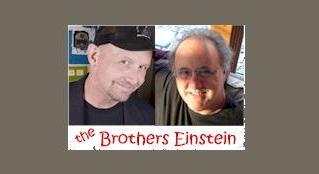Oh, What a Beautiful Messterpiece! - Mike Einstein - MediaBizBloggers

So I'm going through my morning ritual of culling the herd of overnight emails when I encounter two articles in particular – one about a new ad exchange collaboration between DoubleClick and Google, and one detailing the findings of a white paper on click fraud (what Radar Research managing partner Marissa Gluck calls the dirty little secret of the online ad industry that no one wants to talk about).
Heck, I'll talk about it. According to the subject study, fully half of all ad impressions attributed to RON schedules and 95% of associated clicks are fraudulent. This means that any such CPM deal should more rightly be called a "cost per 500" deal. What's more, savvy marketers will conclude that industry-average CTRs should reasonably be re-figured downward to reflect the tonnage in the RON pipeline and its negative effect on the whole.
Ready to get to the bottom of this shocking conspiracy? Grab a calculator and follow me:
Let's use a $.10/CPM buy as an example. If half the impressions are fake, then it now becomes a $.20/CPM deal, which, at the allegedly legitimate industry-average CTR of .1%, yields a cost per visitor of twenty cents. But hold on a minute…if 95% of the RON clicks are fraudulent, then the associated CTR is only 1/20th of .1%, or .005%, which means it takes 20,000 impressions to generate a single visitor at a cost of $4. Now we're getting somewhere!
This entire charade, with its cast of new-age carnival barkers and unwitting dupes, reminds me of the scene in Sing a Song of Six Pants, where ersatz tailor Shemp Howard looks at the guy's suit and asks him, "Where in the world did you get this mess?" To which the guy replies, "I bought it here," prompting Shemp to exclaim: "Oh, what a beautiful messterpiece!"
Just imagine how these astonishing revelations will reverberate within the hallowed halls of Madison Avenue. Take behavioral targeting for example. If the study is to be believed (as if there's any reason to doubt it), BT data derived from RON activity reflects consumer reaction to ads that don't exist and responses that never happen!
All of which brings me to the first article mentioned above. Now that Google and DoubleClick have created an option that essentially disintermediates* the agency's role in this fiasco, our industry will finally be able to achieve the transparency and strict accountability it deserves. And who among us would question that we're better off with the Devil we know (replete with a reassuring pledge to do no harm) than the Devil we don't?
Think of it! No more unscrupulous middlemen. No more smoke and mirrors. You know, I feel better already!
Seriously though, we really have no excuse to act so confused, especially when all of the data point to the same conclusion and describe the same consumer behavior. Our wild machinations notwithstanding, the reality is that in an on-demand world nobody demands more advertising. We've given ourselves the means, motive and opportunity to avoid ads, and so that's exactly what we do.
Let me suggest that when we find ourselves defending the relative integrity of a .1% CTR, the days of advertising as intermediary are clearly numbered (no pun intended). It's time for a return to what works. It's time for a rebirth of advertising as destination; time to revisit the sponsored-content model that fueled the golden age of radio and television, when content was king and advertisers controlled their own destinies. It's time for major advertisers to own the content (or cost-effective access to it) once again, but this time they need to own the means to distribute or otherwise access it as well. This time, the big advertisers who drive large online numbers not only need to acquire lots of quality content (or offer access to lots of quality content) to attract prospects, they need their own cost-effective network reach as well. They need raw scale with both content and media, something only the online content networks can provide. In the very near future, big advertisers will not only own the programs, they'll own the online content networks as well, (the way GE owns NBC).
So if you're tired of being cheated by a spreadsheet... if you've had it up to here with too much BS from too many MBAs, contact me and I'll share with you an idea whose time has come... again!
* Disintermediates is a euphemism for eliminates.
About Mike Einstein and the Brothers Einstein
Mike Einstein is one-half of the Brothers Einstein, a creative strategy and branding boutique. The Brothers Einstein work with very select rapid-growth clients to help define and execute healthy brand strategies in a toxic media environment.
Read all the Einstein Brothers' MediaBizBloggers commentaries at the Brothers Einstein - MediaBizBloggers.


